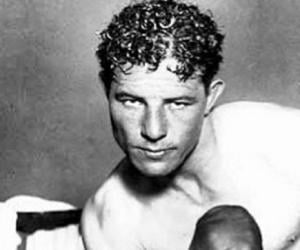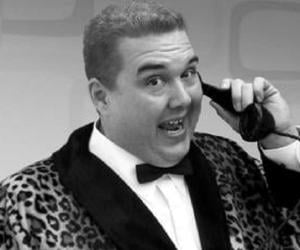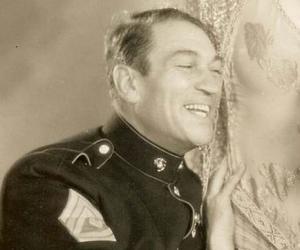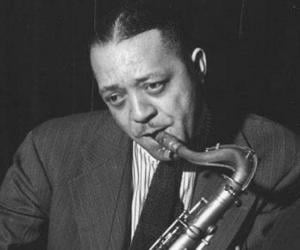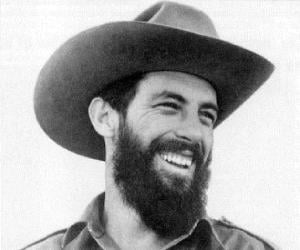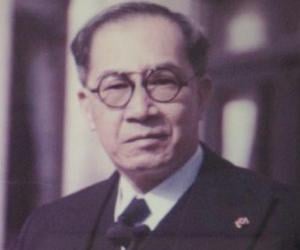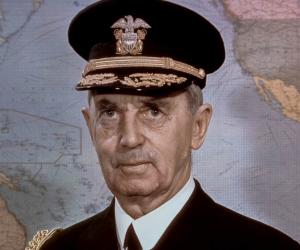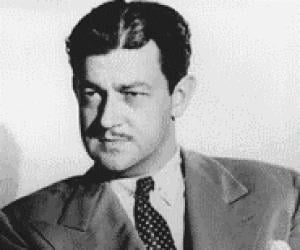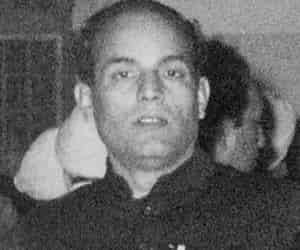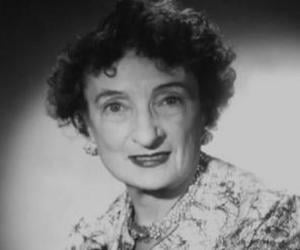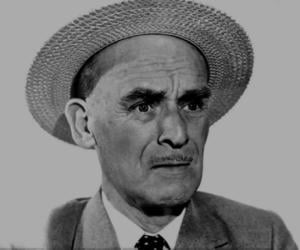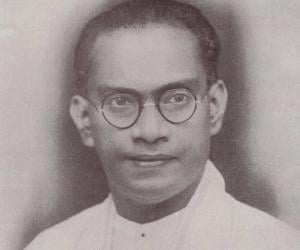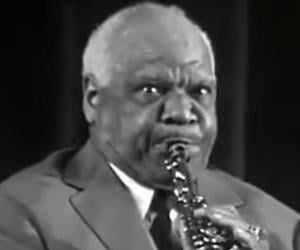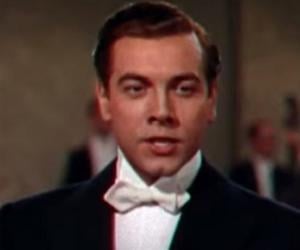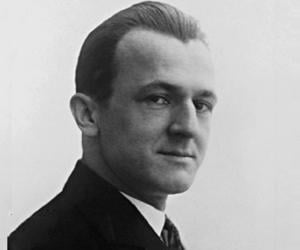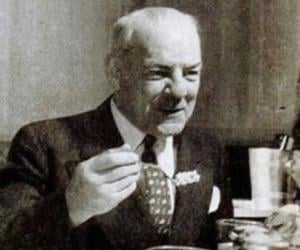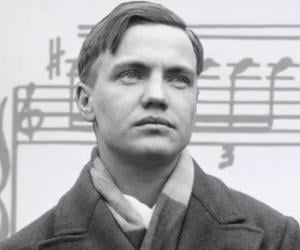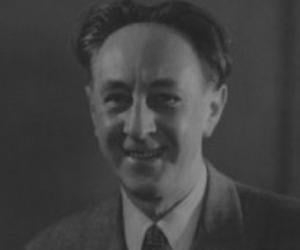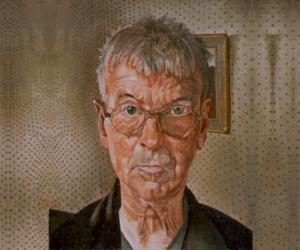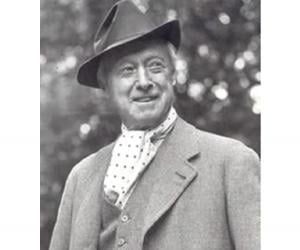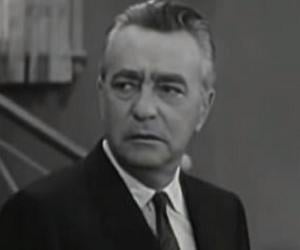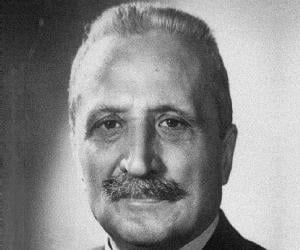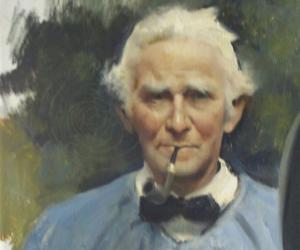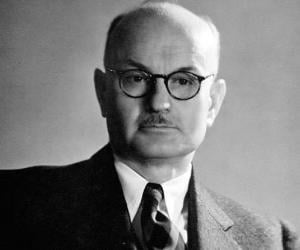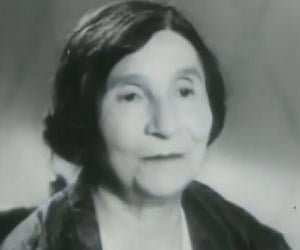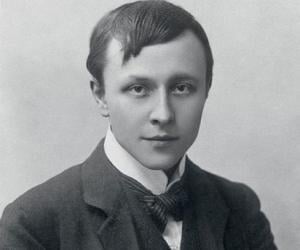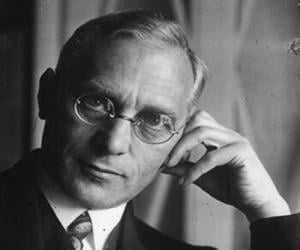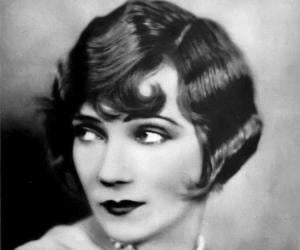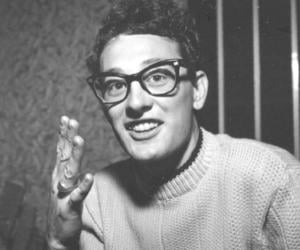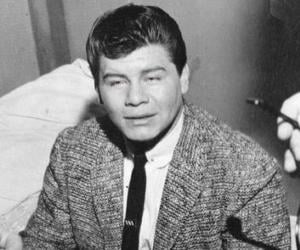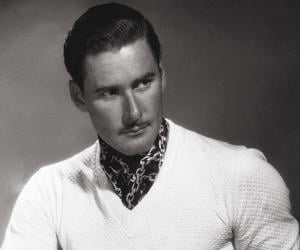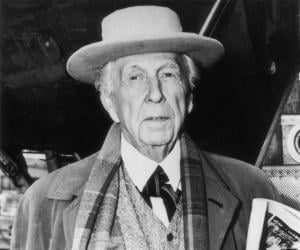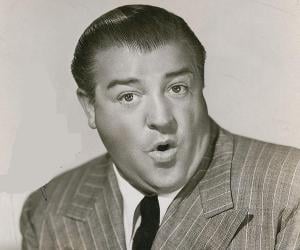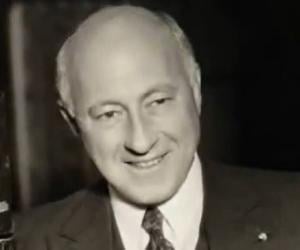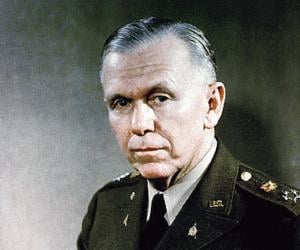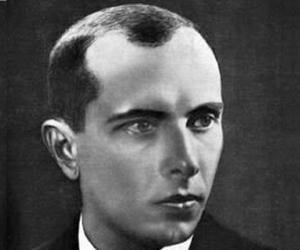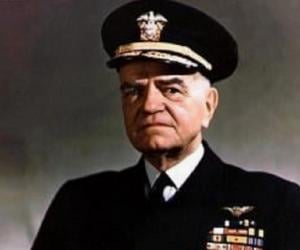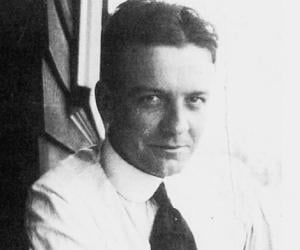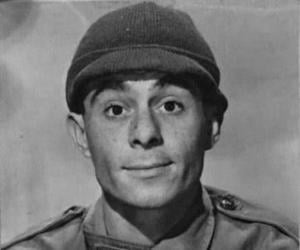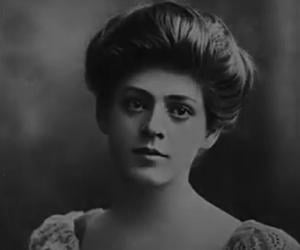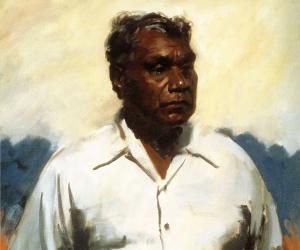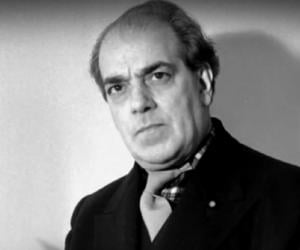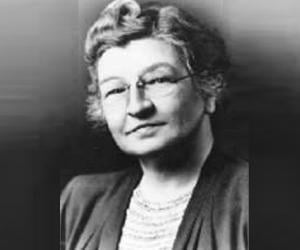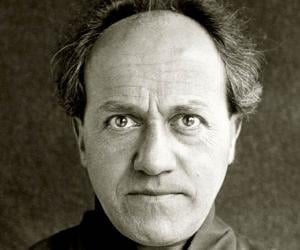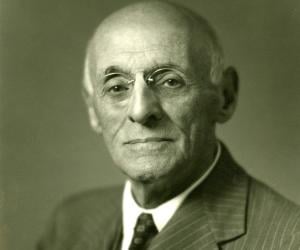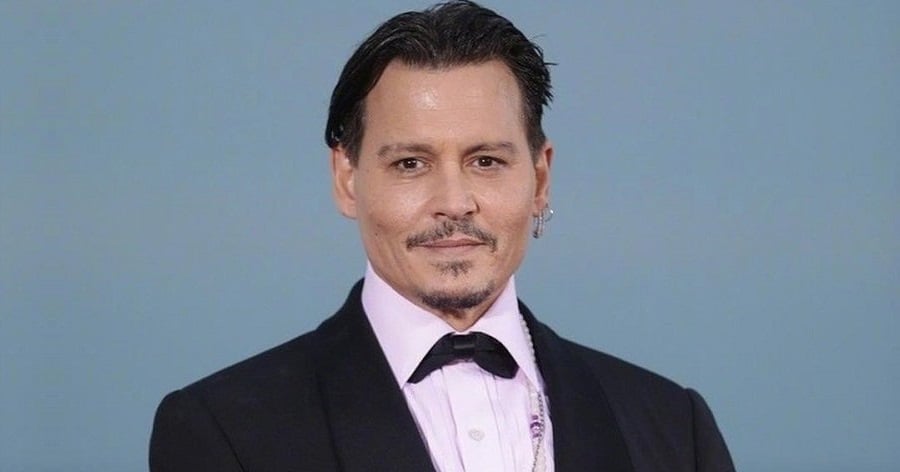Famous People Who Died In 1959
Discover the most famous people died who died in the year 1959. This list includes people like Buddy Holly, Ritchie Valens, Errol Flynn, Frank Lloyd Wright, Billie Holiday and many more. This list of celebrities is loosely sorted by popularity. People featured on this list, include artists, political leaders, military leaders and lawyers who died in 1959. This list includes people from United States, United Kingdom, Germany & Australia and many more countries.
Vote for Your Favourite People Who Died In 1959
Right IconThis ranking is based on an algorithm that combines various factors, including the votes of our users and search trends on the internet.
1
Buddy Holly(Singer-Songwriter & Pioneer in Mid 1950's Rock and Roll)
Birthdate: September 7, 1936
Sun Sign: Virgo
Birthplace: Lubbock, Texas, United States
Died: February 3
Musician and singer-songwriter Buddy Holly was a central figure of mid-1950s rock and roll. Born to a musical family, he learned to sing and play the guitar as a child. He began his career as a teenager and found much success within a short period. Sadly, he died in an aircraft crash when he was just 22 years old.
2
Ritchie Valens(A 'Rock and Roll' Pioneer and a Forefather of the 'Chicano Rock' Movement)
Birthdate: May 13, 1941
Sun Sign: Taurus
Birthplace: Los Angeles, California, United States
Died: February 3
Widely regarded as the pioneer of Latin rock and Chicano rock, Ritchie Valens was an American guitarist and singer-songwriter. Since his untimely death at the age of 17, Ritchie Valens has inspired several musicians and bands like Carlos Santana, Los Lonely Boys, and Los Lobos. Valens also inspired Robert Quine, Jimi Hendrix, Keith O'Conner Murphy, and Chris Montez among others.
3
Errol Flynn(Best Known for His Romantic Swashbuckler Roles in the Golden Age of Hollywood)
Birthdate: June 20, 1909
Sun Sign: Gemini
Birthplace: Battery Point, Australia
Died: October 14
Regarded as the successor to Douglas Fairbanks, Errol Flynn was an Australian-born actor who gained recognition in the Golden Age of Hollywood mainly because of his romantic swashbuckler roles. He also achieved fame for his reputation as a womanizer and party animal in personal life. His career and life inspired several films, such as My Wicked, Wicked Ways and Flynn.
Birthdate: June 8, 1867
Sun Sign: Gemini
Birthplace: Richland Center, Wisconsin, United States
Died: April 9
Frank Lloyd Wright was an American architect who designed over 1,000 structures in a career spanning 70 years. A pioneer of organic architecture, Wright influenced three generations of architects by playing a critical role in the 20th century's architectural movements. His structure Fallingwater is called America's best architectural work and Wright is considered the greatest architect America has ever produced.
5
Lou Costello(Actor and Comedian Best Known for His Comedy Routine ‘Who's on First’)
Birthdate: March 6, 1906
Sun Sign: Pisces
Birthplace: Paterson, New Jersey, United States
Died: March 3
Lou Costello was a comedian best known for his comedy routine Who's on First?, which he performed alongside Bud Abbott. During the Second World War, the comedy duo was one of the highest-paid and most popular entertainers in the world. In 2009, he was inducted into the New Jersey Hall of Fame.
6
Cecil B. DeMille(One of the Most Commercially Successful Producers & Directors in Film History)
Birthdate: August 12, 1881
Sun Sign: Leo
Birthplace: Ashfield, Massachusetts, United States
Died: January 21
Cecil B. DeMille was an American filmmaker. DeMille is widely regarded as a founding father of the cinema of the United States. He is also considered the most successful filmmaker in the history of American cinema. The recipient of several prestigious awards, DeMille's work has influenced several filmmakers. The Cecil B. DeMille Award is named in his honor.
Birthdate: December 31, 1880
Sun Sign: Capricorn
Birthplace: Uniontown, Pennsylvania, United States
Died: October 16
George Marshall was an American statesman and soldier who played a key role in the Allied victory during the Second World War. Marshall served as the third US Secretary of Defense from 1950 to 1951. As Secretary of State, George Marshall advocated economic recovery programs to aid post-war European countries, for which he was honored with the Nobel Peace Prize.
Birthdate: January 1, 1909
Sun Sign: Capricorn
Birthplace: Staryi Uhryniv, Ukraine
Died: October 15
9
Max Baer
(American Boxer: Features on 'The Ring' Magazine's List of 100 Greatest Punchers of All Time)
Birthdate: February 11, 1909
Sun Sign: Aquarius
Birthplace: Omaha, Nebraska, United States
Died: November 21
Height: 6'2" (188 cm)
Birthdate: October 30, 1882
Sun Sign: Scorpio
Birthplace: Elizabeth, New Jersey, United States
Died: August 16
Birthdate: July 23, 1888
Sun Sign: Leo
Birthplace: Chicago, Illinois, United States
Died: March 26
12
The Big Bopper
(Singer, Musician, Disc jockey, Songwriter)
Birthdate: October 24, 1930
Sun Sign: Scorpio
Birthplace: Port Arthur
Died: February 3
Birthdate: August 7, 1927
Sun Sign: Leo
Birthplace: Paris, Illinois, United States
Died: January 21
Birthdate: August 15, 1879
Sun Sign: Leo
Birthplace: Philadelphia, Pennsylvania, United States
Died: June 18
15
Victor McLaglen
(British Boxer-Turned-Hollywood Actor Who Rose to Fame as Character Actor)
Birthdate: December 10, 1886
Sun Sign: Sagittarius
Birthplace: Stepney, East London, England
Died: November 7
Known for his collaborations with director John Ford, actor Victor McLaglen was a favorite of audiences of Westerns and even bagged an Oscar for his performance as Gypo Nolan in The Informer. Earlier, he was a carnival boxer and would often use the nickname Sharkey for his bouts.
Birthdate: August 27, 1909
Sun Sign: Virgo
Birthplace: Woodville, Mississippi, United States
Died: March 15
Birthdate: July 28, 1902
Sun Sign: Leo
Birthplace: Hermannsburg
Died: August 8
Born Elea, Albert Namatjira was rechristened after converting to Christianity. The Australian aboriginal painter, known for his watercolor paintings, couldn’t build a house in Alice Springs because of his aboriginal origin, leading to public outrage, which eventually led the government to make him and his wife full citizens.
18
Camilo Cienfuegos
(Armed force officer)
Birthdate: February 6, 1932
Sun Sign: Aquarius
Birthplace: Havana
Died: October 28
Camilo Cienfuegos was a Cuban revolutionary who was part of the 1956 Granma expedition alongside Che Guevara and Fidel Castro. He went on to become one of Fidel Castro's top guerrilla commanders and played an important role in winning the Battle of Yaguajay, which earned him the nickname Hero of Yaguajay. Camilo Cienfuegos is revered as a hero in Cuba.
19
José P. Laurel
(The 3rd President of the Philippines)
Birthdate: March 9, 1891
Sun Sign: Pisces
Birthplace: Tanauan, Philippines
Died: November 6
The 3rd president of the Philippines, José P. Laurel had also led the country as its Commissioner of Justice and Minister of the Interior. His rule as a president, though, was largely nominal, as the Philippines was occupied by Japan back then. Charged with treason multiple times, he managed to escape trials.
20
William D. Leahy
(Naval Officer)
Birthdate: May 6, 1875
Sun Sign: Taurus
Birthplace: Hampton, Iowa, United States
Died: July 20
Birthdate: March 5, 1887
Sun Sign: Pisces
Birthplace: Rio de Janeiro, State of Rio de Janeiro, Brazil
Died: November 17
Heitor Villa-Lobos was a Brazilian composer, conductor, cellist, and classical guitarist. He is widely believed to be "the single most significant creative figure in 20th-century Brazilian art music." He was a prolific composer with over 2,000 orchestral, chamber, instrumental, and vocal works to his name. His music continues to be popular today, even six decades after his death.
22
Preston Sturges
(Playwright, Director)
Birthdate: August 29, 1898
Sun Sign: Virgo
Birthplace: Chicago, Illinois, United States
Died: August 6
23
Laxmi Prasad Devkota
(Poet)
Birthdate: November 13, 1909
Sun Sign: Scorpio
Birthplace: Kathmandu, Nepal
Died: September 14
Birthdate: October 23, 1880
Sun Sign: Libra
Birthplace: Belfast, Ireland
Died: February 4
Birthdate: May 23, 1882
Sun Sign: Gemini
Birthplace: New York, New York, United States
Died: April 12
Height: 5'8" (173 cm)
26
S. W. R. D. Bandaranaike
(Diplomat, Politician, Lawyer)
Birthdate: January 8, 1899
Sun Sign: Capricorn
Birthplace: Colombo
Died: September 26
Birthdate: May 14, 1897
Sun Sign: Taurus
Birthplace: New Orleans, Louisiana, United States
Died: May 14
28
Mario Lanza
(Actor, Tenor)
Birthdate: January 31, 1921
Sun Sign: Aquarius
Birthplace: Philadelphia, Pennsylvania, United States
Died: October 7
Height: 5'8" (173 cm)
29
George Grosz
(German Artist Best Known for His Caricatural Drawings and Paintings of Berlin Life in the 1920s)
Birthdate: July 26, 1893
Sun Sign: Leo
Birthplace: Berlin, Germany
Died: July 6
German Expressionist artist George Grosz, later a naturalized US citizen, is most noted for his caricatural drawings and paintings of Berlin life. A leading member of the Berlin Dada and New Objectivity groups during the Weimar Republic, Grosz later departed from his earlier style and subjects and taught at the Art Students League of New York for several years.
30
Duncan Hines
(Food critic, Journalist)
Birthdate: March 26, 1880
Sun Sign: Aries
Birthplace: Bowling Green, Kentucky, United States
Died: March 15
Birthdate: February 10, 1883
Sun Sign: Aquarius
Birthplace: Howard County
Died: October 29
32
George Antheil
(American Composer, Pianist, Author and Inventor)
Birthdate: July 8, 1900
Sun Sign: Cancer
Birthplace: Trenton, New Jersey, United States
Died: February 12
33
Ernest Bloch(One of the Greatest Swiss Composers in History)
Birthdate: July 24, 1880
Sun Sign: Leo
Birthplace: Geneva, Switzerland
Died: July 15
Born to a Jewish family in Geneva, Ernest Bloch had learned to play the violin by age 9. Best known for works such as Avodath Hakodesh, Bloch composed music that carried a significant neoclassical trend. He also taught at the University of California, Berkeley, and was a skilled photographer, too.
34
Bohuslav Martinů
(Czech Classical Composer)
Birthdate: December 8, 1890
Sun Sign: Sagittarius
Birthplace: Policka, Czechia
Died: August 28
Czech composer and modern classical musician Bohuslav Martinů had started learning the violin at age 6. While he was dismissed from the Prague Conservatory for his poor performance, he later joined the Prague Philharmonic Orchestra and then moved to Paris to study music. He later moved to the US and taught at Princeton.
Birthdate: June 30, 1891
Sun Sign: Cancer
Birthplace: Cookham, England
Died: December 14
Birthdate: October 8, 1878
Sun Sign: Libra
Birthplace: Mendham, Suffolk
Died: July 17
37
Charles Vidor
(Film director)
Birthdate: July 27, 1900
Sun Sign: Leo
Birthplace: Budapest, Hungary
Died: June 4
38
Enrico De Nicola
(Journalist)
Birthdate: November 9, 1877
Sun Sign: Scorpio
Birthplace: Naples
Died: October 1
Enrico De Nicola was an Italian jurist, journalist, and politician. He served as the provisional head of state of republican Italy from 1946 to 1948, following which he became the first president of Italy. He was a successful lawyer before he entered politics. He was succeeded by economist Luigi Einaudi as the president.
39
Andrew Loomis
(Illustrator)
Birthdate: June 15, 1892
Sun Sign: Gemini
Birthplace: Syracuse, New York, United States
Died: May 25
40
Edward C. Tolman
(Psychologist)
Birthdate: April 14, 1886
Sun Sign: Aries
Birthplace: Newton
Died: November 19
41
Nap Lajoie
(Baseball player)
Birthdate: September 5, 1874
Sun Sign: Virgo
Birthplace: Woonsocket, Rhode Island, United States
Died: February 7
42
Wanda Landowska
(Polish Harpsichordist and Pianist Who Helped Initiate the Revival of the Harpsichord in the 20th Century)
Birthdate: July 5, 1879
Sun Sign: Cancer
Birthplace: Warsaw, Poland
Died: August 16
Wanda Landowska was a Polish pianist and harpsichordist who is credited with reinvigorating the popularity of the harpsichord through her performances, writings, teaching, and recordings in the early 20th century. In 1933, Wanda Landowska became the first person to record Goldberg Variations, which were originally composed by Johann Sebastian Bach for keyboard, on the harpsichord.
43
Alfred Kubin
(Austrian Graphic Artist Known for His Drawings and Paintings of Dreamlike, Often Morbid, Subjects)
Birthdate: April 10, 1877
Sun Sign: Aries
Birthplace: Litomerice, Czechia
Died: August 20
Austrian printmaker, illustrator, and occasional writer Alfred Kubin is counted among the important representatives of Symbolism and Expressionism. He is noted for his inventive black-and-white drawings that included dreamlike, often morbid, subjects and portrayed supernatural creatures and sexual violence. He illustrated Der Orchideengarten magazine, and has also worked for the likes of E. T. A. Hoffmann and Edgar Allan Poe.
Birthdate: October 31, 1875
Sun Sign: Scorpio
Birthplace: Los Angeles, California, United States
Died: July 17
Birthdate: October 18, 1881
Sun Sign: Libra
Birthplace: Wągrowiec
Died: March 8
German-American physician Max Gerson was the proponent of the Gerson Therapy, which began as a diet-based treatment for migraine but ended up being used by him as a treatment for tuberculosis and cancer. Though Gerson died of pneumonia, there was an alternate theory that stated he had been murdered.
Birthdate: November 13, 1866
Sun Sign: Scorpio
Birthplace: Louisville, Kentucky, United States
Died: September 21
Birthdate: February 14, 1869
Sun Sign: Aquarius
Birthplace: Glencorse, Scotland
Died: November 15
Scottish physicist, meteorologist and Nobel Laureate Charles Thomson Rees Wilson is noted for inventing the cloud chamber particle detector, also referred to as Wilson cloud chamber, used for visualizing the passage of ionizing radiation. It played a significant role in the area of experimental particle physics between the 1920s and 1950s.
48
Gilda Gray
(Dancer, Actress)
Birthdate: October 25, 1895
Sun Sign: Scorpio
Birthplace: Rydlewo, Poland
Died: December 22
49
Ed Walsh
(Baseball pitcher)
Birthdate: May 14, 1881
Sun Sign: Taurus
Birthplace: Plains Township, Pennsylvania, United States
Died: May 26
Birthdate: November 25, 1893
Sun Sign: Sagittarius
Birthplace: Boston, Massachusetts, USA
Died: October 21
